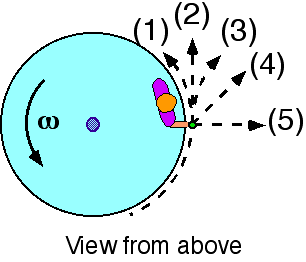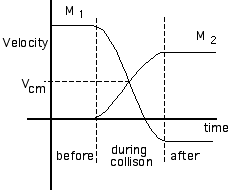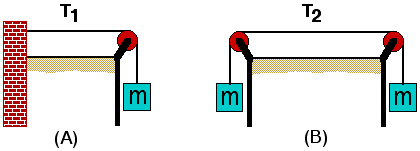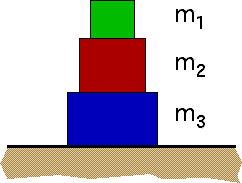Mass M1 is traveling along a smooth horizontal surface and
collides with a mass M2 (stationary) which has a spring
attached as shown below.
The spring between the blocks is most compressed when
- all the energy in the system is potential energy stored in the spring.
- the net momentum of the system is zero.
- the velocity of the center of mass has its smallest value.
- mass M1 is no longer delivering an impulse to Mass M2.
- the only kinetic energy in the system is that of the center of mass.
- none of the above
- cannot be determined






Commentary:
Answer
(2) This question is useful for probing pre-existing ideas about
momentum, and also for distinguishing momentum ideas from kinetic
energy. It should be used just after, or even before, covering momentum
concepts.
Usually students starting momentum already have had some energy, and
kinetic energy in particular. If appropriate, they can be asked if
energy is lost in the collision. Is more or less energy lost if the
carts do not stick together?